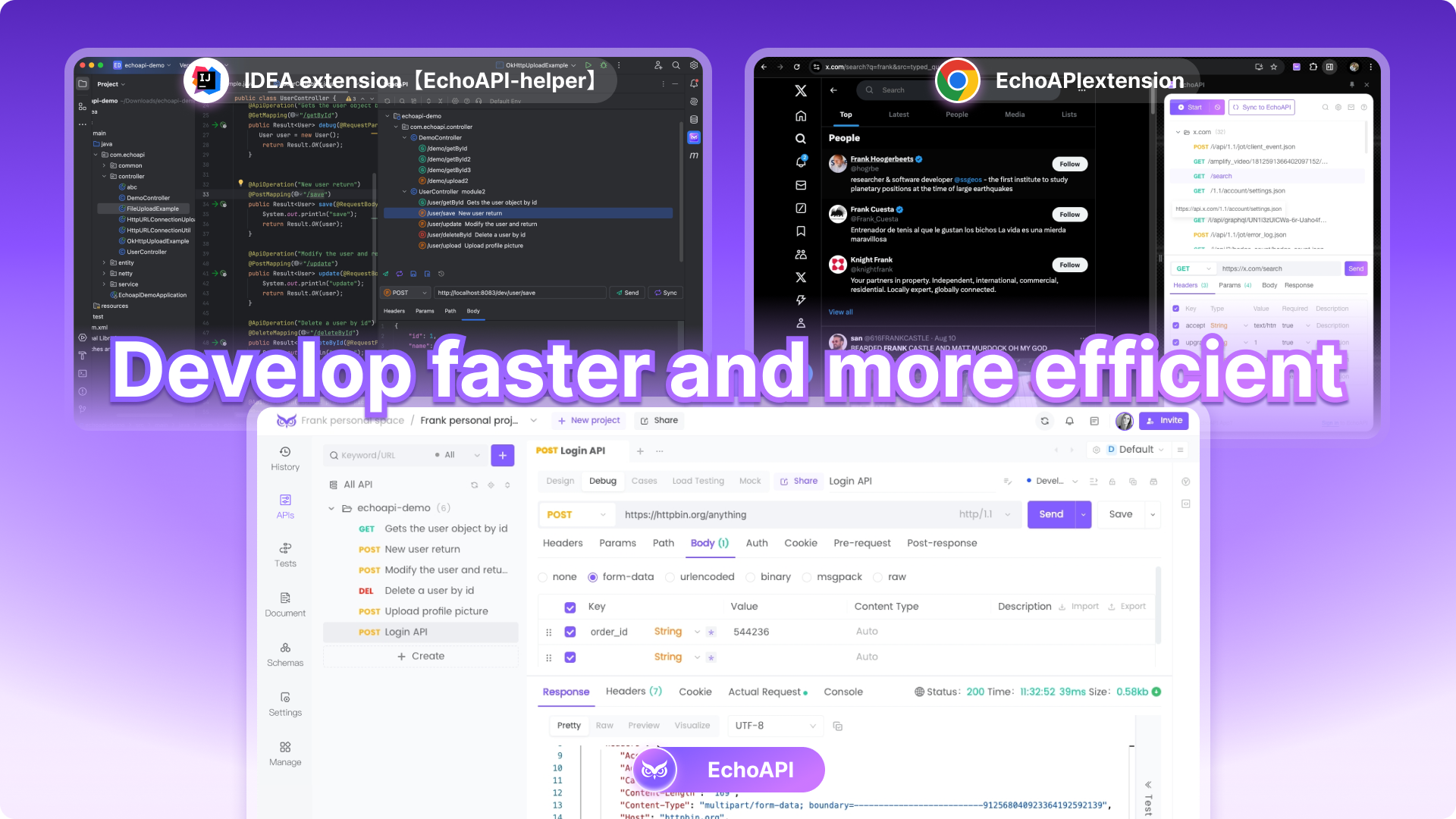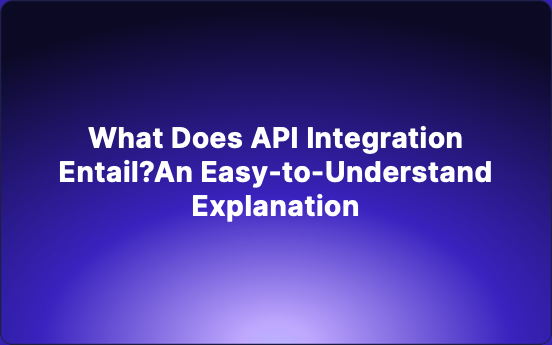What Does API Integration Entail?An Easy-to-Understand Explanation
API integration facilitates the seamless collaboration of various software applications by leveraging Application Programming Interfaces (APIs). This enables the smooth exchange of data and functionalities between systems, enhancing efficiency and interoperability.
API integration connects diverse software applications to collaborate seamlessly through Application Programming Interfaces (APIs). This enables the smooth exchange of data and functionality between systems. In this detailed guide, we will delve into the essence of API integration, its operational mechanisms, and offer illustrative examples and valuable perspectives on its associated costs and advantages.
Comprehending APIs: The Core of API Integration
Before delving into integration processes, it's essential to have a solid understanding of APIs themselves. An Application Programming Interface (API) acts as a framework of protocols, routines, and tools that govern the interactions among software components. Consider APIs as virtual mediators that facilitate communication between diverse applications without necessitating a deep understanding of each other's internal workings.
APIs function through essential elements like endpoints (specific URLs where requests are directed), HTTP methods (such as GET, POST, PUT, DELETE) that specify the type of operation, authentication mechanisms for ensuring secure access, and standardized data formats (commonly JSON or XML) for managing requests and responses.
Understanding API Integration
API integration is the act of creating a link between two or more APIs, empowering them to exchange data and communicate efficiently. This connection enables a variety of software systems to collaborate seamlessly, leading to a notable improvement in overall functionality and productivity.
API integration can manifest in different ways, such as data integration for synchronizing information between systems, functional integration that integrates features from one application into another, and third-party integration that incorporates external services into existing systems.
The Significance of API Integration in Contemporary Business Practices
API integration plays a crucial role in today's business landscape, offering a pivotal means for enhancing operational efficiency. By automating processes and reducing manual data entry, it helps in minimizing errors and streamlining workflows. Real-time data synchronization ensures data consistency across interconnected systems, establishing a reliable source of information for informed decision-making.
Moreover, API integration enables scalability, empowering businesses to seamlessly incorporate new features or integrate with additional services as they expand. This adaptability results in enhanced user experiences, paving the way for the development of more sophisticated and user-friendly applications. From a financial standpoint, API integration can lead to substantial cost savings by reducing the necessity for custom development and leveraging existing APIs effectively.
The Operational Mechanism of API Integration
Implementing API integration involves a structured process that demands meticulous planning and execution. It commences with a thorough planning and strategizing phase where integration goals are established, systems earmarked for integration are pinpointed, and data flow and mapping prerequisites are outlined. Here's a detailed breakdown of how API integration unfolds:
Planning and Strategy
1.Define integration objectives.
2.Identify systems slated for integration.
3.Determine data flow and mapping requisites.
API Selection and Analysis
1.Evaluate available APIs.
2.Review API documentation.
3.Assess crucial factors like rate limits, authentication methods, and supported data formats.
Design and Architecture
1.Develop a comprehensive integration design.
2.Define error handling and fallback strategies.
3.Plan for scalability and optimal performance.
Development and Testing
1.Implement the devised solution.
2.Conduct thorough testing to ensure functionality, security, and performance align with the specified standards.
Deployment and Monitoring
1.Launch the integration methodically.
2.Establish robust monitoring and alert systems.
3.Set up a routine maintenance and update regimen.
Echoapi: The Comprehensive API Platform
Echoapi stands out as an all-encompassing API platform equipped with a robust array of features tailored to elevate your team's API integration prowess. Through Echoapi, you can effortlessly incorporate third-party tools and CI/CD platforms into your API workflows. The automated testing functions within Echoapi seamlessly integrate with your development team's continuous integration processes, guaranteeing a smooth and efficient development journey.

Examples of API Integration
- Payment Gateway Integration
Purpose: Facilitate online payments.
Example: E-commerce platforms integrating with PayPal or Stripe APIs for secure processing of customer payments.
Process: The e-commerce platform transmits transaction details to the payment gateway API, which executes the payment and provides the transaction status.
- Social Media Integration
Purpose: Enhance user engagement and marketing strategies.
Example: Websites or applications integrating with Facebook, Twitter, or Instagram APIs to enable seamless content sharing.
Process: The platform leverages social media APIs for user authentication, content posting, and social media analytics retrieval.
- Shipping and Logistics Integration
Purpose: Optimize order fulfillment processes.
Example: Online retailers integrating with FedEx or UPS APIs for real-time shipping rates, shipment tracking, and automated label generation.
Process: The retailer's system interacts with the shipping API to access shipping options, transmit shipment details, and receive tracking updates.
- CRM Integration
Purpose: Enhance customer relationship management practices.
Example: Sales and support platforms integrating with Salesforce or HubSpot APIs to synchronize customer data and streamline operations.
Process: The platform utilizes CRM APIs to fetch customer information, update records, and manage customer interactions.
- Weather Data Integration
Purpose: Deliver up-to-date weather information.
Example: Mobile applications or websites integrating with Weather API providers like OpenWeatherMap or Weatherstack to display current weather conditions and forecasts.
Process: The application or website requests weather data from the API and presents it in a user-friendly format.
- Communication Integration
Purpose: Improve communication capabilities.
Example: Businesses integrating with Twilio or SendGrid APIs for sending SMS notifications, making voice calls, or dispatching emails.
Process: The business system forwards communication requests to the API, which manages message delivery and reports the status of each communication attempt.
Common Challenges and Best Practices in API Integration
API integration, while advantageous, presents organizations with various challenges such as security vulnerabilities, version control complexities, data format discrepancies, rate limiting constraints, performance bottlenecks, and error management intricacies.
To overcome these hurdles and ensure seamless API integration, implementing best practices is essential. These practices encompass maintaining comprehensive documentation of integration processes, utilizing API management tools for effective oversight, incorporating robust error handling protocols, ensuring scalability for handling increased workloads, conducting regular monitoring and upkeep, prioritizing a security-centric approach, and adhering to recognized standards like REST or GraphQL for optimal API design and implementation.
Conclusion
In conclusion, API integration serves as a fundamental pillar of contemporary software development and digital evolution. By facilitating smooth communication among varied systems, it equips businesses to forge more effective, scalable, and inventive solutions.
In the ever-evolving digital landscape, mastering API integration will be paramount for organizations striving to maintain competitiveness and provide exceptional user experiences in a progressively interconnected world.




 EchoAPI for VS Code
EchoAPI for VS Code

 EchoAPI for IntelliJ IDEA
EchoAPI for IntelliJ IDEA

 EchoAPl-Interceptor
EchoAPl-Interceptor

 EchoAPl CLI
EchoAPl CLI
 EchoAPI Client
EchoAPI Client API Design
API Design
 API Debug
API Debug
 API Documentation
API Documentation
 Mock Server
Mock Server








